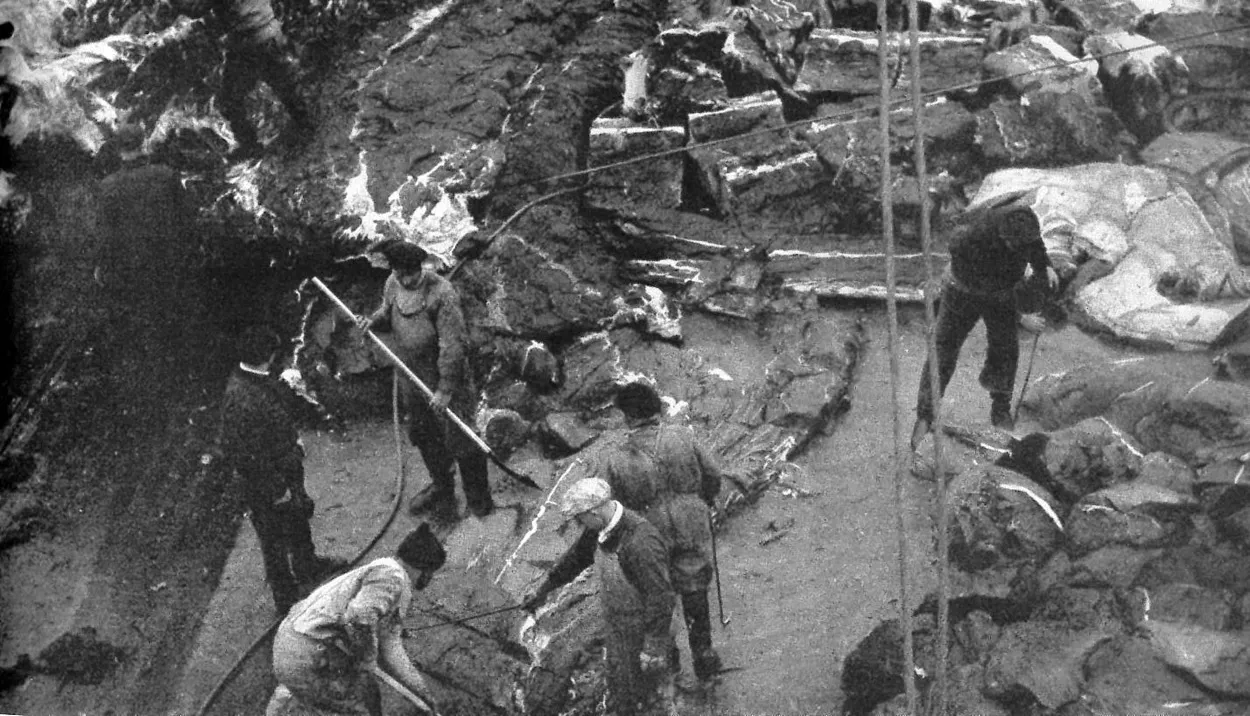Lemmers at work with the whale meat
Whales and Whaling pictures
Next
Previous
Back to gallery
Back to whale and whaling
thumbnails
After the flensers have removed the blubber from a whale, the next job is to deal with what is left. This is the muscle - meat, the bones and internal organs. The whale carcass is handed over (actually dragged by winch to another part of the deck) to a group of men called the "Lemmers" who work on the "Lemming Deck". This is a less skilled job than flensing and so in the hierarchy of whalemen, the lemmers were a step down in status and pay.
As might be expected a whale yields tons and tons of meat. This wasn't always used in the best way. The whalers themselves would eat this fresh meat served up in their galley, but most of it would be ground up for use as food for livestock, as pet food, or even as fertiliser. The only country that has ever carried out whaling mainly to use all of the food for human consumption is Japan and one of the arguments for Japan continuing whaling so long after other countries had stopped and wanting to resume is that Japan does and always has derived the most value from one whale of any country that carried out whaling. Unfortunately most of the other whaling nations didn't use the meat well. If it were not wasted, then it was often used poorly to produce low quality and low value goods, far less valuable than if the meat had been processed properly by freezing or canning.
Other parts of the whales were used for various purposes too, the guts and other internal organs went into the production of meat meal for which there was a whole different set of processing machinery below decks and a different set of holes in the deck to feed the whale pieces into.
At various times, the endocrine organs were separately saved for extracting hormones and other biochemicals from them. The liver was sometimes dried and flaked and used when back in the home country to provide a good source of vitamins.
The very first amino acid sequence of a complex protein in the 1950's was carried out on sperm whale myoglobin, the protein that holds oxygen in muscle as haemoglobin does in the blood and so makes red meat red. Sperm whales being great divers have large amounts of this protein in their muscle and being whales, have a large amount of this muscle, so it was an ideal plentiful source in the early days of biochemical research when methods were relatively primitive by today's standards.

